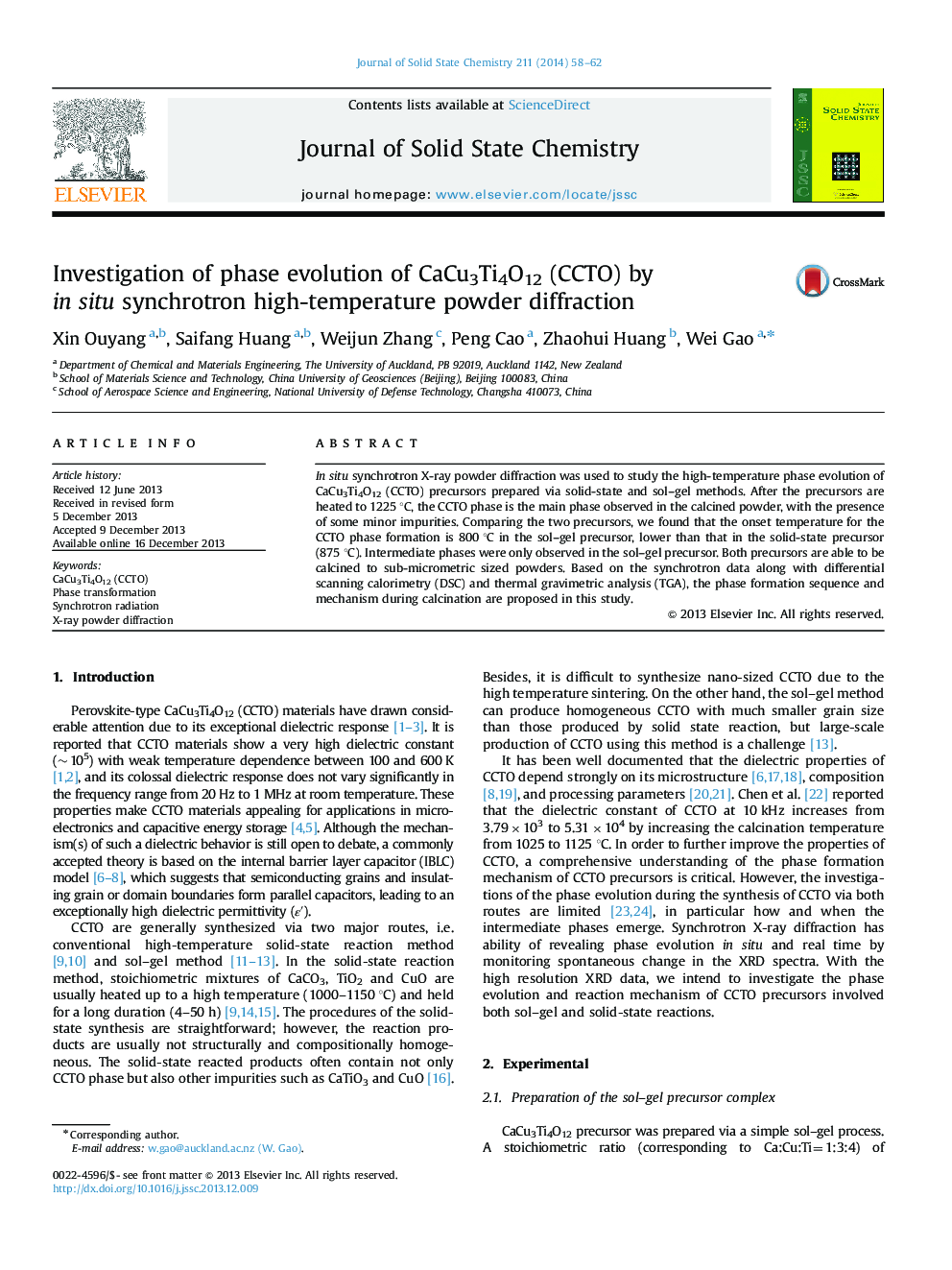| Article ID | Journal | Published Year | Pages | File Type |
|---|---|---|---|---|
| 1329008 | Journal of Solid State Chemistry | 2014 | 5 Pages |
•Phase formation sequence/mechanism in two CCTO precursors has been established.•Formation temperature of CCTO via sol–gel method is lower than solid-state method.•Intermediate phases are only observed in the sol–gel precursor.•Both precursors are able to be calcined into sub-micrometric sized powders.
In situ synchrotron X-ray powder diffraction was used to study the high-temperature phase evolution of CaCu3Ti4O12 (CCTO) precursors prepared via solid-state and sol–gel methods. After the precursors are heated to 1225 °C, the CCTO phase is the main phase observed in the calcined powder, with the presence of some minor impurities. Comparing the two precursors, we found that the onset temperature for the CCTO phase formation is 800 °C in the sol–gel precursor, lower than that in the solid-state precursor (875 °C). Intermediate phases were only observed in the sol–gel precursor. Both precursors are able to be calcined to sub-micrometric sized powders. Based on the synchrotron data along with differential scanning calorimetry (DSC) and thermal gravimetric analysis (TGA), the phase formation sequence and mechanism during calcination are proposed in this study.
Graphical abstractThe in situ synchrotron HT-XRD patterns of CCTO sol–gel and solid-state precursor.Figure optionsDownload full-size imageDownload as PowerPoint slide
